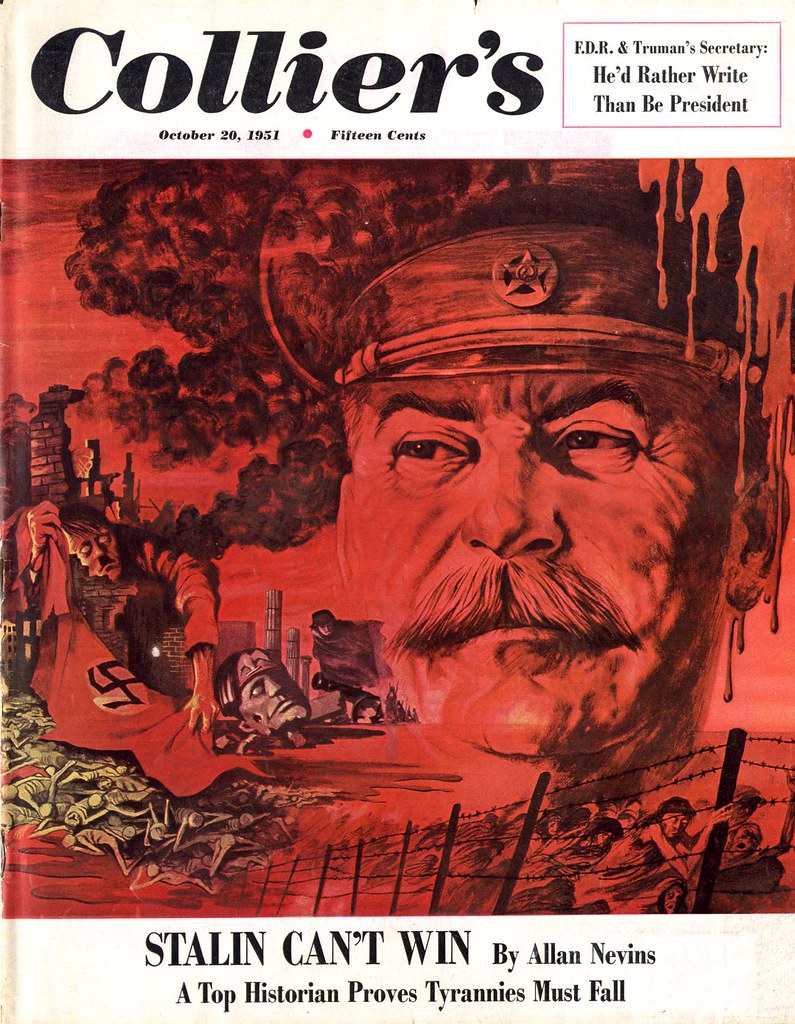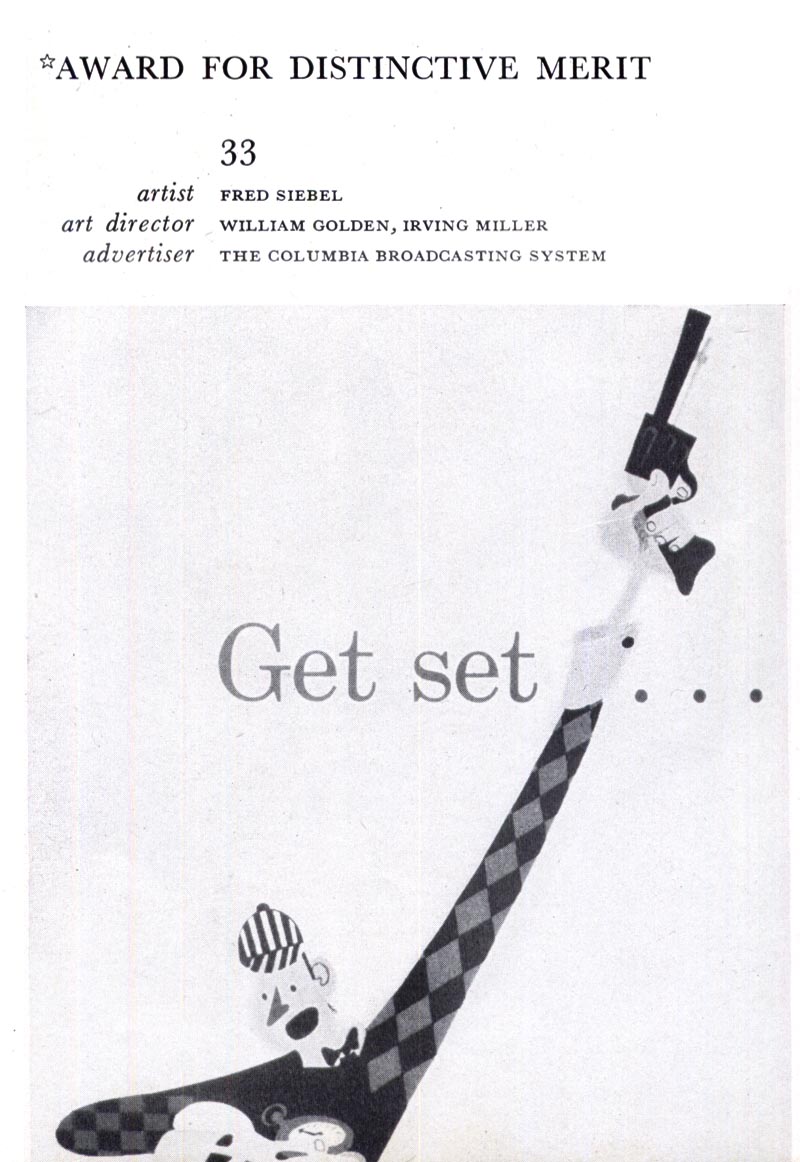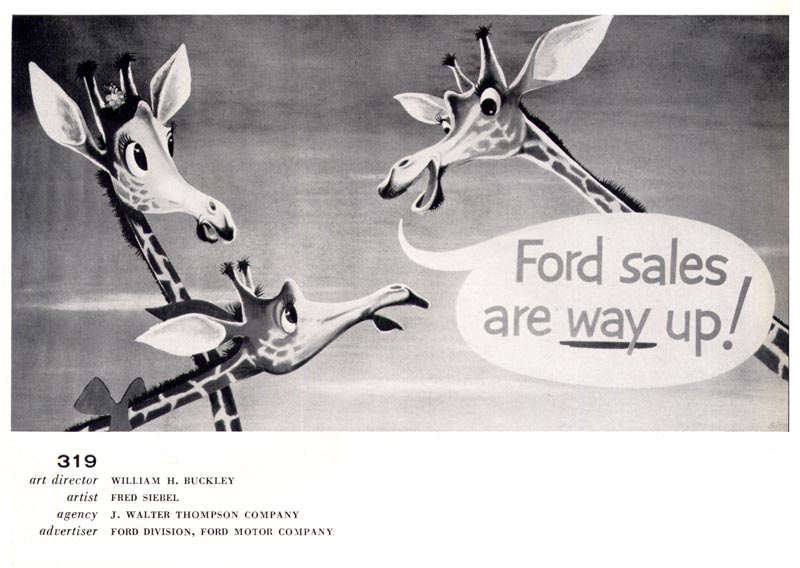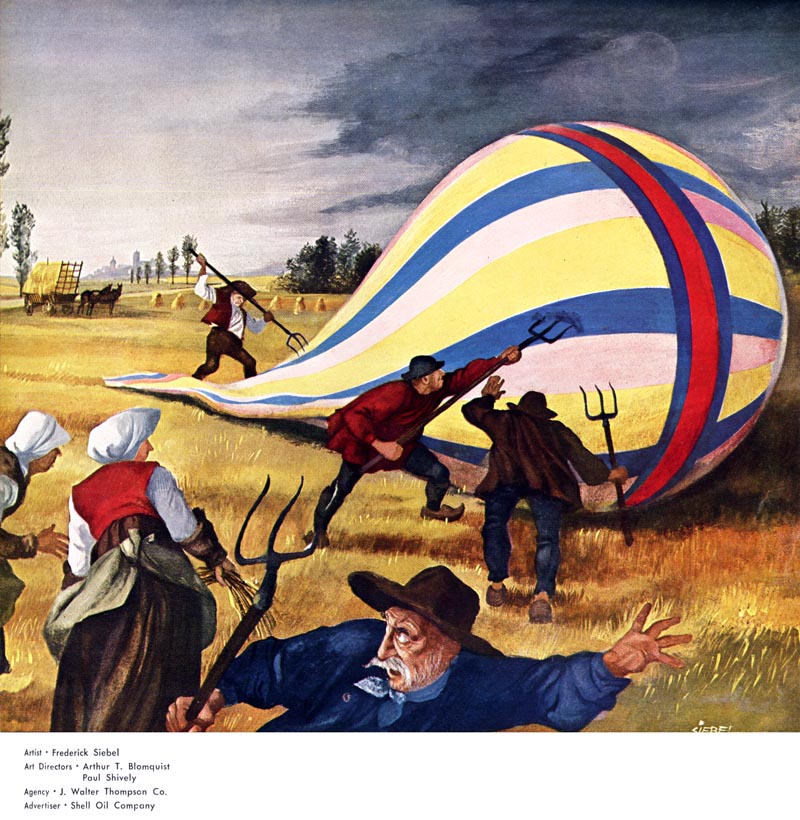
At that time I emphasized how versatile Siebel was at tailoring his style to the needs of each client for whom he worked.

Well get ready to see even more variation by the amazing Frederick Siebel.

In the years between 1945 and 1955 "Fritz" Siebel almost always had multiple entries accepted into the Art Directors Club Annuals... the year the piece below won an Art Directors Club Medal, he had 6 - all done in different styles.

The restless illustrator seems to have had no urge to be pigeon-holed into solving every client's problem with the same visual solution. Imagine that.

This attitude didn't hinder the busy Siebel from working for an enviable array of national accounts: Collier's, Textron, CBS, GE, Ford, Shell Oil, and General Cigar Co. are only a few of the clients who employed Frederick Siebel art, despite his being a 'jack-of-all-trades".

Anita Virgil (who worked at Rahl Studios in the 1950's with Siebel) sent me the following after reading that earlier series I posted on the artist:
"...you mused as to whether Fritz was a carefree creator, etc. or "a buttoned down commercial arts professional." I never saw him carefree for a moment. I would vote for the latter quote as a true picture of the man I knew. Amazing scope. Totally focused on his profession. And no, the artist in that painting he did of the artist and model looked nothing like Fritz. He was a handsome, big-headed, can-do, fast-moving, large-boned, big voice guy-type fellow."

"Not an effete bone in his body. Remember I told you he left Rahl to become AD for Seagram's I think it was. Very much suited to the role also of the exec business man."

Interesting... perhaps that's part of what defines the restless illustrator: an acute awareness that illustration is a business - and the illustrator a businessperson. I have often wondered if that aspect of the profession is top of mind for many of its practitioners.
*My Fritz Siebel Flickr set.
Hmm.Al Dorne was the epitome of the businessman/illustrator but had a very identifiable style based on sound drawing technique.
ReplyDeleteA lot depends on where an artist is working. I worked In a smaller market where it would be very difficult to keep busy with one style. Some jobs I did as a craftsman, The job would have to be done well, but be done in a style I might not favor. it helped pay my bills & helped the studio I worked for. I would always try to make samples of the kind of art I wanted to do. This helped me get the type of the work I liked.
ReplyDeleteThanks to you both for your astute comments.
ReplyDeleteKyle2, Al Dorne is the ultimate example of the businessman/illustrator. Dorne was adept at a broad range of styles from very realistic to thoroughly cartoony and employed those variations appropriately as they were needed for any given assignment. That's a flexibility you don't see from 99% of other illustrators who have very identifiable styles. Unless I've missed all the cartoony Bernie Fuchs and Robert Fawcett samples out there...
I think most of those artists would turn down work outside their comfort zone (or no AD would ever consider them) but I suspect Dorne never turned down a client who met his price - no matter what style they wanted, and did his Al Dorne best to deliver what they paid for. And yes - all based on exceptional drawing skills.
Harald; Bingo - you're describing my career in Toronto during my formative years.
hello i just sent you an email sibels wife is still alive...
ReplyDeletegood luck.
Hi Leif,
ReplyDeleteI did a post on a book illustrated by Fritz Siebel and put a link in to a post you did on Siebel. All credit is given to you.
Thanks,
Jill